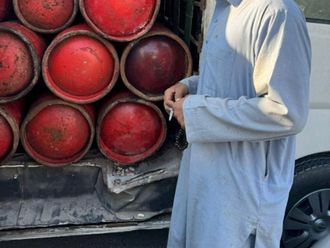
Sharjah: Sharjah Police are working on building a DNA database with information on detainees and criminals.
Details of police employees will also be included in the database so that, if necessary, they could be excluded during investigations into crimes, said Brigadier Dr Abdul Al Qader Al Ameri, director of Forensic Laboratory, Sharjah Police.
He explained that DNA tests conducted at the laboratory have solved many cases and also helped internationally. “Many international experts have used the laboratory’s DNA results and findings [for investigations],” he added.
Brig Al Ameri said that DNA tests help police in cases like murder and rape, and help identify individuals in disasters and in parental disputes. “The DNA is extracted from blood and analysed using advanced devices,” he said.
Brig Al Ameri said in 2014, Sharjah Police introduced a new laboratory specialised in DNA testing using the mitochondria system — considered the most accurate and sophisticated system and which is being used internationally because of its unique characteristics.
The DNA tests have also helped offer proof of family kinship during inheritance disputes. The laboratory has solved many such cases this year on the request of the court, he said.
International achievements
Brig Al Ameri said the Sharjah Police’s laboratory has also scored some international achievements. These include examining samples of 400-year-old and 150-year-old mortal remains using advanced methodology. “Only three agencies were able to analyse the samples as old as over 400 years and achieve 100 per cent results, including the forensic laboratory of Sharjah Police,” said Brig Al Ameri.
The Sharjah laboratory competed in this research with 19 other international scientific and police laboratories, including from America, Britain, France and Germany, which were supervised by Agency for Genetic Analysis Services (FDNAS) based in the Czech Republic, and in cooperation with the Institute of Forensic Medicine, Charles University, Prague.
How DNA helped solve cases
In one case, a man attacked a woman in a lift. Police could find only a drop of blood at the crime scene, and after its analysis, the attacker was identified as a man wanted by the police in a Dh700,000 theft case.
In another case, an Arab man reported to the police that he had been attacked by three men. He showed the police traces of blood left behind after the attack. The blood analysis revealed it to be goat’s blood. When the police confronted the man with this finding, he confessed that as he worked alone in a factory, he fabricated the story [of the attack] so he could convince his employer to hire more people.
In yet another case, a woman complained to the police that a neighbour’s dog attacked her and tore her abaya. She said she was exercising outside when the dog bit her. Police found the dog’s hair on her abaya and DNA tests of the hair sample revealed a perfect match to the dog.












